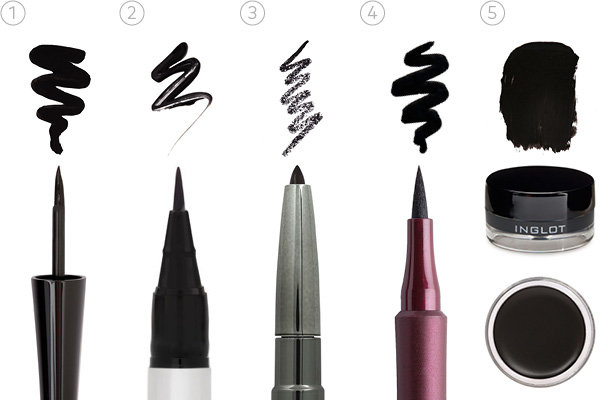Aesheh Piroozi traces the origin of your eyeliner:

As ladies' eyes are a symbol of beauty, they deserve no less care than the rest of the body. We always consider black eyeliner an important and indispensable cosmetic tool, as no makeup look is complete without showcasing the beauty of the eyes.
However, how much do we know about the history of black eyeliner?
Hundreds of years before YouTube makeup tutorials taught us how to create the perfect smoky eye, Ancient Egyptians first used kohl to create eyeliner-like strokes in their eyes, making them look wide and beautiful. Both men and women wore kohl in Ancient Egypt.
Bedouins also used it, and both Arab and Persian people considered it a necessary cosmetic tool. Kohl, however, is not what we know and have today. This includes not just the material used to create the eyeliner, but also the techniques and the style of application—which varied depending on the occasion.
Ancient Egyptians used the natural mineral antimony—usually found as brittle, shiny rocks—ground into the form of both powder and paste. Many also requested kohl from Iran, where it was prepared by pressing a form of paste into seashells. Persians applied the eyeliner inside the eyelid using a special tool made of seashell—which is a totally Persian tradition.
This tool, dipped in either kohl powder or paste then applied inside the eyelid, remains one a traditional method of eye makeup for women of all ages.
Kohl has also been associated with a number of beliefs including its use as a protection against jealousy and “the evil eye.” For this reason, you will sometimes see newborn babies in countries like India, Pakistan, and the Gulf with kohl (or “surma” as it’s called in some regions) applied to eyes as eyeliner. It is also believed by some that kohl strengthens eyesight or can treat eye infections and allergies caused by external pollutants.
Yet, because many modern commercial brands use lead sulfide instead of traditional antimony in their formulations, products today often contain high levels of lead—a dangerous chemical and known developmental neurotoxin—making “kohl” a banned product in many countries and in American and European pharmaceutical establishments. However, despite the risks, it is still used in countries that have known it for centuries.
Antimony eyeliner, or Arabic kohl, is also known among the Arabs. In its purest form, Arabic kohl is an eyeliner made from stone antimony mixed with the finest type of Amber. Antimony stone is a mineral found in the mines and mountains of Isfahan, Morocco, and the Levant.
Nowadays, there are many types of eyeliner tools, and international cosmetics brands race to develop and provide the best kinds of eyeliner, from liquid eyeliner to pencil to gel liner.

We use each type of eyeliner tool, and each unique product formulation, in various ways depending on the makeup looks desired. And makeup artists do their best to come up with multiple creative uses for each type of new product.
Makeup artists, and everyday women alike, use pencil eyeliner to color in the waterline—the space between the lashes and the eye—to create the illusion of thicker lashes. Pencil eyeliner is generally also used outside the eyes to draw the liner wings, or as a base for smokey eyes.This small tool has many uses and secrets in the beauty industry!
Although various summer colors, white, and beige eyeliners gain in popularity, black eyeliner will always retain its appeal. Combining black and beige can give a gorgeous look to an eye by drawing beige eye pencil in the middle of the eye and black on the edges for a deep and wide look.
The history of eyeliner proves that it is more than a mere cosmetic item. From Egyptian goddesses to everyday women around the world, it has served to express identity, personality, and style.
#Aesheh Piroozi t





Comments